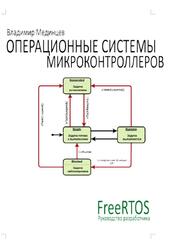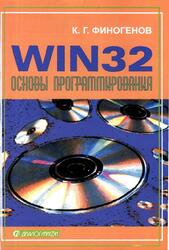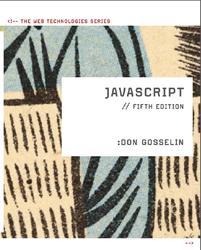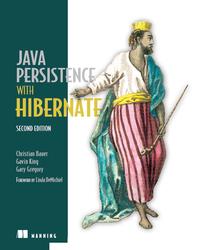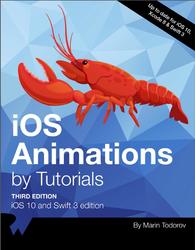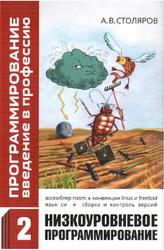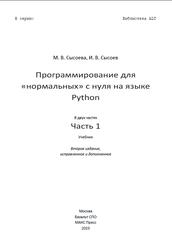Graphing Data with R, An Introduction, Hilfiger J.J., 2016.
It’s much easier to grasp complex data relationships with a graph than by scanning numbers in a spreadsheet. This introductory guide shows you how to use the R language to create a variety of useful graphs for visualizing and analyzing complex data for science, business, media, and many other fields. You’ll learn methods for highlighting important relationships and trends, reducing data to simpler forms, and emphasizing key numbers at a glance.
Anyone who wants to analyze data will find something useful here—even if you don’t have a background in mathematics, statistics, or computer programming. If you want to examine data related to your work, this book is the ideal way to start.
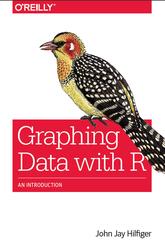
Exploratory Graphs and Presentation Graphs.
Graphs are useful both for exploration and for presentation. Exploration is the process of analyzing the data and finding relationships and patterns. Presentation of your findings is making your case to others who have not studied the data as intensively as you have. While you are exploring the data, your graphs can be stark, lean, and somewhat unattractive. In the role of data analyst — the person who knows the data, and is getting to know it better with each graph made — you do not need all the titles, labels, reference details, and colors that someone sitting through a presentation might expect, and indeed might find necessary. Furthermore, adding all this extraneous detail just slows down the exploration phase. Also, some graphs will prove to be dead ends or just not very interesting. Consequently, many graphs might be discarded during the discovery journey.
As the process of exploration continues, adding some details can make relationships a little clearer. As you get closer to presentation and/or publication, the graphs become more detailed and prettier. You will probably create many plain graphs in the process of analysis and relatively few beautiful graphs to appear in the final report.
Contents.
Preface.
Part I. Getting Started with R.
1. R Basics.
Downloading the Software.
Try Some Simple Tasks.
User Interface.
Installing a Package: A GUI Interface.
Data Structures.
Sample Datasets.
The Working Directory.
Putting Data into R.
Sourcing a Script.
User-Written Functions.
A Taste of Things to Come.
2. An Overview of R Graphics.
Exporting a Graph.
Exploratory Graphs and Presentation Graphs.
Graphics Systems in R.
Part II. Single-Variable Graphs.
3. Strip Charts.
A Simple Graph.
Data Can Be Beautiful.
4. Dot Charts.
Basic Dot Chart.
5. Box Plots.
The Box Plot.
Nimrod Again.
Making the Data Beautiful.
6. Stem-and-Leaf Plots.
Basic Stem-and-Leaf Plot.
7. Histograms.
Simple Histograms.
Histograms with a Second Variable.
8. Kernel Density Plots.
Density Estimation.
The Cumulative Distribution Function.
9. Bar Plots (Bar Charts).
Basic Bar Plot.
Spine Plot.
Bar Spacing and Orientation.
10. Pie Charts.
Ordinary Pie Chart.
Fan Plot.
11. Rug Plots.
The Rug Plot.
Part III. Two-Variable Graphs.
12. Scatter Plots and Line Charts.
Basic Scatter Plots.
Line Charts.
Templates.
Enhanced Scatter Plots.
13. High-Density Plots.
Working with Large Datasets.
14. The Bland-Altman Plot.
Assessing Measurement Reliability.
15. QQ Plots.
Comparing Sets of Numbers.
Part IV. Multivariable Graphs.
16. Scatter plot Matrices and Corrgrams.
Scatter plot Matrix.
Corrgram.
Generalized Pairs Matrix with Mixed Quantitative and Categorical Variables.
17. Three-Dimensional Plots.
3D Scatter plots.
False Color Plots.
Bubble Plots.
18. Coplots (Conditioning Plots).
The Coplot.
19. Clustering: Dendrograms and Heat Maps.
Clustering.
Heat Maps.
20. Mosaic Plots.
Graphing Categorical Data.
Part V. What Now?.
21. Resources for Extending Your Knowledge of Things Graphical and R Fluency.
R Graphics.
General Principles of Graphics.
Learning More About R.
Statistics with R.
A. References.
B. R Colors.
C. The R Commander Graphical User Interface.
D. Packages Used/Referenced.
E. Importing Data from Outside of R.
F. Solutions to Chapter Exercises.
G. Troubleshooting: Why Doesn't My Code Work?.
H. R Functions Introduced in This Book.
Index.
Бесплатно скачать электронную книгу в удобном формате, смотреть и читать:
Скачать книгу Graphing Data with R, An Introduction, Hilfiger J.J., 2016 - fileskachat.com, быстрое и бесплатное скачивание.
Скачать pdf
Ниже можно купить эту книгу, если она есть в продаже, и похожие книги по лучшей цене со скидкой с доставкой по всей России.Купить книги
Скачать - pdf - Яндекс.Диск.
Дата публикации:
Теги: учебник по программированию :: программирование :: Hilfiger
Смотрите также учебники, книги и учебные материалы:
Следующие учебники и книги:
Предыдущие статьи:

